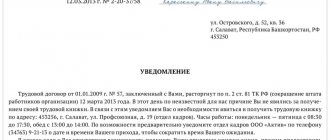The scope of activity of a number of enterprises (organizations) requires the establishment of a six-day working week.
The presented work schedule is due to the need to provide services provided by companies outside the standard five-day work schedule.
The involvement of workers in the execution of production tasks 6 days a week is carried out in accordance with the norms and restrictions presented by the legislator.
The 6-day week is put into effect at the discretion of the organization’s management, which also determines labor standards in the appropriate operating mode.
What is this according to the Labor Code of the Russian Federation?
Taking into account the specifics of production in legal entities of all forms of ownership, the following operating modes can be established:
- five-day week;
- six-day week;
- shift work.
Irregular work schedules, flexible schedules and shortened hours may also be used.
Labor legislation establishes a general standard work schedule, which is 40 hours a week with 5 working days and 2 days off.
In this case, days off may be:
- combined (Sunday + Saturday or Monday);
- floating (Sunday + any day of the week).
Important! Sunday, regardless of operating hours, is considered a day off.
A six-day week is a work pattern in which workers have one day off per week, subject to a maximum of 40 working hours.
The exact concept of the presented term is not fixed in the Labor Code, however, the legislator puts forward basic requirements that must be present in any working hours:
- length of the working week;
- temporary indications of arrival at work, end of the working day, and breaks;
- weekend.
Is it legal to install?
In accordance with Article 100 of the Labor Code of Russia, employers of all forms of ownership have the right to establish a six-day work schedule at an enterprise (organization), if required by the specifics of production.
A number of other articles (111, Labor Code of the Russian Federation) establish restrictions that are mandatory when using a schedule with 6 working days.
To legally establish a six-day work week, the management of the enterprise should draw up the necessary local documentation, which includes:
- Internal labor regulations;
- Collective labor agreement.
In addition, the work schedule is indicated in individual labor agreements, and when it is implemented in the course of production activities, an appropriate administrative document - an order - should be issued and, on its basis, additional agreements should be concluded to the employees’ labor contracts.
Standard hours according to the Labor Code
The general law on temporary restrictions on attracting workers to work in enterprises (organizations) of any form of ownership is established by the legislator and amounts to 40 hours a week (Article 91 of the Labor Code of Russia).
With a five-day schedule, daily working hours are usually 8 hours.
For workers involved in production for six working days, an additional rule has been established that it is impossible to establish working hours on the eve of holidays and weekends that exceed 5 hours.
Taking into account the above prohibition, employers most often use the following six-day work schedule:
- from Monday to Friday the duration of work is 7 hours daily;
- Saturday – 5 o’clock.
Important! The legislator does not establish restrictions on the use of other schedule schemes, the use of which takes into account the restrictions of the Labor Code.
How are timesheets kept?
It was indicated above that when using a six-day working week in an enterprise (organization), total records of working time should be kept.
Those. all legal entities with a standard, five-day week, when calculating hours worked and calculating wages, use the formulas presented by Regulation No. 588 n, however, similar calculations are not suitable for companies with 6 working days due to the unequal number of Saturdays in each month.
The management of the company appoints a responsible person who is obliged to keep a time sheet.
To accurately calculate wages, the accounting document is filled out in a combined way - using letter designations, as well as indicating the daily number of hours worked by employees.
As a rule, with a six-day period, a weekly accounting period is established, i.e. at the end of each working week, the authorized employee sums up the number of hours worked by the workers and enters the resulting amount in the designated cells.
At the end of the month, all weekly indicators are summed up, which directly affect payroll calculations.
Procedure for switching to a six-day working week
The employer must keep in mind the following prohibitions:
- Introduction of an incomplete week for a period exceeding 6 months.
- Application of the schedule: rest for a week, work for a week.
- Introduction of a “floating” schedule. A “floating” schedule means an unequal number of hours per week.
The employer is not recommended to contradict the opinion of the trade union. This can be done, but disagreements are fraught with trial or inspection by the labor inspectorate. The manager must keep in mind that he cannot introduce a schedule that is contrary to the rights of workers.
The procedure for establishing a 6-day week and the transition from a five-day week
The working hours, which include a six-day or five-day schedule, are an essential working condition that every employee must be familiar with before signing an employment contract.
The specified routine is necessarily fixed in the local acts of the enterprise - the collective labor agreement and the internal labor regulations.
Due to changes in production, it may be necessary to change the work schedule from a five-day to a six-day work week.
The submitted changes are formalized by issuing an order by the head of the organization in accordance with the regulated procedure.
The order, as well as the new schedule and internal labor regulations, must be developed no later than 2 months before the innovation comes into force.
After the order is issued, it should be familiarized with it against signature of each employee who gives written consent to work under the updated regime or refuse to switch to a six-day regime with further termination of the employment contract.
Due to the fact that the amendments may entail mass layoffs, the employment service is notified of the transition to a six-day schedule.
An additional agreement to the employment contract is signed with employees who give written consent to work according to the new schedule.
Sample order
The order to switch to a six-day working week is issued in accordance with the basic requirements of office work.
The submitted document must specify the reason why production is forced to increase the number of working days, and also specify the daily number of working days, days off, and break time.
The specified administrative document is signed by the manager, as well as by officials who are directly affected by the order (on familiarization of employees, on concluding additional agreements, on new payroll calculations, etc.).
order to switch to a six-day week from a five-day week - word.
Transition to a five-day work week. Length of the working day in the history of Russia
The program is hosted by Andrey Shary. Taking part are Doctor of Historical Sciences Alexander Bezborodov and Deputy Editor-in-Chief of the Delo newspaper Dmitry Travin
.
Andrey Shary
: 40 years ago, the Soviet leadership decided to abolish the six-day working week that had existed in the country since Stalin’s times. Workers received the right to a second day off. In the year of the 50th anniversary of the October Revolution, this measure was supposed to indicate the real successes of developed socialism. I am talking with Doctor of Historical Sciences, Rector of the Moscow Historical and Archival Institute Alexander Bezborodov.
He is very cold and has blows. day - 00 arrival in Sassnitz. We wait an hour to catch the ferry to Sweden. At 00 we leave Warnemünde. In Trelleborg we are about 30 and in half an hour we also have a customs declaration that covers the whole of Scandinavia. There are new road signs everywhere as it is on the right this year. Beautiful yellow rape lines and white white buildings with gardens. They don’t see forests, only small groves. In the city of Malmo we have an hour. We are standing at an intersection at an intersection and the drivers are very surprised and prefer us.
The end of the 60s is the end of the Thaw era. General Secretary Leonid Ilyich Brezhnev is in power. In that frame of reference, what was the significance of the abolition of the six-day work week?
Alexander Bezborodov
: At the end of the 60s, very serious changes began to occur in the country related to the political way of life. Great importance began, in particular, to be given to the pompous, quite celebration of various anniversary dates. 1967 is a celebration of a round date, the anniversary of the Great October Socialist Revolution. On March 7, the Central Committee of the CPSU, the Council of Ministers of the USSR, and the All-Union Central Council of Trade Unions adopted a resolution on the transfer of workers and employees of enterprises, institutions and organizations to a five-day work week with two days off. Before March 8 and in the future in the year of the 50th anniversary of the Great October Socialist Revolution, this had a strong political resonance. Kosygin was already the head of the Council of Ministers. By the way, he is one of those who, along with Brezhnev and Grishin, signed this resolution. The Five Year Plan was the eighth, very successful, one of our most successful. There was a lot of calculations going on there – both by Kosygin personally and by his staff.
At 22 we are in Gothenburg. We're leaving in an hour. day - the border between Sweden and Norway passes at 5:30 am. On the way from the border we met two cars, and the native speakers were Mitacek and Mr. Zelenka. Finally, the main place of our stay is Oslo! We cross the Oslofjord and go to an old monastery, which has been converted into a cultural house. Then we will be divided into families in which we will live. In the evening we talk about people who know the northeast - Jiří Raška and Vera Caslavska. We'll be asleep around eleven, and it's still light outside - it's a polar day. day.
The social component, the task of strengthening Brezhnev and his group in power, was very seriously correlated with all political anniversary affairs. This was very important socially both for the new regime and in general for labor productivity to increase. After all, even if we follow Marxist dogmas - the free time that workers and employees now had, they should have contributed to ensuring that labor productivity, in any case, did not stand still.
We get up at 30 and go to the royal palace. Today is a Norwegian public holiday, there is music, King Olaf and his son Harald and his groom are waving it from the balcony. day. Today the mayor of Oslo received us in Oslo, we brought him beer. There was a tour of the ski center and the Holmenkollen bridge. In the evening we have an exam. The afternoon is a boat ride from the dock to the nearby town of Drøbak, where we play in a natural amphitheater about 5 meters from the waterfront. Day - Morning shopping, city tour and park with parts of the sculptor Wiganda.
In the afternoon we have a concert at the National Theater, and in the evening we have a recording on Norwegian radio. day - afternoon departure to the Bigdoy peninsula, Fram boat tour, Kon-Tiki and the Viking ship museum. The driver, Mr. Slajnik, is swimming in the cold sea. day - Morning on the cable car to the royal view, lunch. There's a concert in the park and back to Oslo. Afternoon - Early city tour of Oslo. Then there was a concert of many brass concerts. In the evenings they have fun until midnight in the cultural house.
Andrey Shary
: The introduction of a five-day working week was not caused by the actual successes of the Soviet economy. Political and social factors played a major role in this decision. So says St. Petersburg economist, deputy editor-in-chief of the Delo newspaper Dmitry Travin.
Dmitry Travin
: In those years, in general, the nature of the Soviet economy changed greatly. From the outside, from the West, to Sovietologists, this economy often seemed to be a command economy in all its fundamentals, as our Russian economists, say, Vitaly Naishel, Petr Aven and some others found out. A command economy could be called somewhere in the Stalin years, and then it gradually began to turn into the so-called economy of approvals or bureaucratic bargaining. Every boss had to take into account the opinion of his subordinate, down to the simple worker. In this sense, since it was necessary to bargain with society, to bargain with ordinary hard workers, it was necessary to give something to people. The hard six-day work week, of course, could not be liked by many. It was a kind of relic of the quasi-GULAG. This was one of the elements of providing this freedom, when a person could do something for himself on a free day, drink a bottle of vodka or take a walk in nature.
Day - Morning city tour, shopping, lunch at the university. Saying goodbye to the hosts, who were very friendly. 30 flights from Oslo. At 9 o'clock we cross the border with Sweden. Grabovsky carries passports for control. They don't even want them! day - still passing through Sweden. At about 2 p.m., it turned out to be a bad luck - the glass in the bus door was broken. He replaced a piece of plywood. day - In Berlin, stop for two hours in the center. Then on the old motorway to Dresden. We cross the border in Hrensko at 00.
We sleep in the same hotel again. day - After breakfast, departure through Doksy and Mlada Boleslav. We've been good, but we're glad to be back home. The Dolchatsky festivities were good. The weather was pleasant, there were many guests, but the organizers received nothing. The single farm team organized a trip to Italy. 15 people took part in the tour.
Andrey Shary
: The amount of working time that workers of the Soviet Union spent in production decreased by one sixth. This is a huge economic loss. How did they make up for it?
Dmitry Travin
: In general, if you look at Soviet economic statistics, even from them we see that the Brezhnev period was far from the most effective. In fact, both these losses and many other losses associated with the relative liberalization of the economy, in fact, were not renewed. As soon as the rigid Gulag system collapses, such a socialist economy cannot exist at all effectively. Therefore, people worked worse and rested more. Over time, this led to worsening shortages. In a sense, compensation was the increase in oil prices, which occurred, however, not in the 60s, but later - after 1973. And this really supported the Soviet economy.
The tumultuous events led to the politically charged Pastor Joseph Pastusciano, who arrived in Gluck in a year of many citizens, who appeared to be already doing his job, retorted Joseph Pastusciano. They read to him that he was too involved in the communist government. Two signature events occurred: one for Dean Pastusciano's departure from Hluk, the other for his stay.
Blessa was carried into a carriage dressed in noisy suits. August will remain in the memory of our citizens for a long time. At 5 o'clock in the morning, state radio reported that, despite the Czechoslovakian border, Warsaw Pact troops were crossing five countries - Poland, the German Democratic Republic, Hungary, Bulgaria and the Soviet Union. It was a huge shock; no one understood what was happening. Questions were in the air: will there be war? The races were running and not running in the morning. Some employees went home.
Andrey Shary
: Can we consider this decision to reduce the working hours that people spent at work as one of the elements of Alexei Kosygin’s economic reform?
Dmitry Travin
: I wouldn’t call it a reform. The essence of the reform, which was conceived back in the last Khrushchev years and, indeed, began to be implemented when Kosygin entered the highest power and was to provide enterprises with somewhat more independence, to allow them to use at least some small funds for their own needs, to encourage workers, who work better than others. What we are talking about now is not a stimulating element. I think that this rather indicates not a desire to transform the regime, but a weakening of the capabilities of the regime as a whole.
The day shift arrived, but soon they all went to their homes. During the day, two military vehicles passed by in Hluka, but no one stopped. People sat on radio and television waiting to see what would happen. In August, both shifts worked normally. The district union council declared a strike from 12 to 13. An event in support of the government of Ludwik Svoboda and Alexander Dubcek was signed in the race.
As always, in such cases, the stores began to panic. During the day he was quite calm, passing through the "Noise" convoy of military vehicles at night. People became convinced that all landmarks were disappearing from intersections. There were large inscriptions on buildings, fences and roads. “Freedom-Dubchek”, “Go home, Ivana, Natasha is waiting for you”, “Lenin gets up, Brezhnev goes crazy.” In August, a one-hour strike sounded at noon, during which time the bells rang throughout the country.
UPDATE: Apparently, the photo of the grave is most likely a photoshopped fake and February 30th never actually existed in the USSR. Personally, I have not yet been able to find a single confirmation in the form of any calendar or newspaper for 1930 or 1931. But calendars are known that indicate the opposite.
Original taken from masterok
to the Soviet revolutionary...
In October, a federation was created to mark the anniversary of the creation of the independent Czechoslovak Republic. The Czech and Slovak Republics were created. Independent governments and the Czech and Slovak National Councils were elected to lead the two republics. Management is regulated by the federal government.
This year, Telovykhov worked until August, after which the activity ceased, because after the entry of Soviet troops it is not recommended to gather more people. Six weeks passed, then the fall came and there was nothing in the gym because there was a nationwide coal shortage. No training, no academy. However, all football remains at its best. Hockey was also a winter event, but the weather was bad. Hockey has been very popular lately. Children play on all the streets of the village. This section of athletics has been very active this year.
It would seem why I am showing you this photo. Do you notice anything strange on her? Exactly exactly? Well, take a closer look! Found it? Ok, let's go to the cut and read the details...
- a calendar, an attempt to introduce which was made starting from October 1, 1929 in the USSR. However, on December 1, 1931, this calendar was partially abolished. The final return to the traditional calendar was made on June 26, 1940.
Ludwa Nemawa deserves the greatest credit for the performance of the athletics division. Linkage of the road at the upper mill to the bridge over the Okluki stream to the Borszycka road and to the 840-meter Autopaly race at a price of 320 thousand CZK. The Okluki stream tunnel has been modified at the upper end and beyond the lower humus 700 meters. The lighting of the village on the main street from the entrance to Antoninsk up the upper mill was illuminated for the first time by September.
Bridge crossings were redesigned so that pedestrians walked on the sidewalk rather than on the road. This year water connections were made for the school buildings, the fort and some houses. A transformer was built on Lane and the electrical network was reconstructed. Household electrical appliances are on the rise, and the current transformer has failed to provide electricity. The situation was especially important in the morning and evening. In the future, the plant will be self-sufficient in terms of both hot water and heating.
During the operation of the Soviet revolutionary calendar, in parallel, in some cases, the Gregorian calendar was used.
The Soviet revolutionary calendar with a five-day week was introduced on October 1, 1929. Its main goal was to destroy the Christian seven-day weekly cycle, making Sundays working days. However, despite the fact that there were more days off (6 per month instead of 4-5), such an artificial rhythm of life turned out to be unsustainable; it contradicted both everyday habits and the entire established folk culture. Therefore, the revolutionary calendar, under the pressure of life, gradually changed towards the traditional one, which was restored in 1940. This calendar reform took place as follows.
He also created the Sports Administration and Social Building. On the ground floor there are dressing rooms for 400 people, a dining room and a cultural hall on the ground floor. A beet landfill was created in Vlnov. The farmers demanded that the beet plant had to be delivered to the sugar factory, which was very difficult, especially for small farmers who received, for example, 400 CZK and 480 CZK for transporting them. Therefore, they contributed to the creation of beet scales and beet dumps. The new landfill in the Vlcnov area is far from ideal, because in rainy weather a lot of dirt is delivered to Hluk.
On August 26, 1929, the Council of People's Commissars of the USSR, in the resolution “On the transition to continuous production in enterprises and institutions of the USSR,” recognized the need to begin a systematic and consistent transfer of enterprises and institutions to continuous production from the 1929-1930 business year (from October 1). The transition to “continuous work”, which began in the fall of 1929, was consolidated in the spring of 1930 by a resolution of a special government commission under the Council of Labor and Defense, which introduced a unified production timesheet-calendar.
In recent years, wet spots have appeared on the walls of the church. Look for the cause of dampness and how to prevent it. During the excavations, workers found part of a metal rosary, which they gave to the chronicler. The work was financed by donations from citizens. A church committee was formed, whose chairman was Josef Pracharz. This committee sent a postal bill to every home through which citizens could send financial sums for church repairs. Previously, citizens paid money at home. This was cancelled.
The children's playground cost 851 CZK. Irrigation equipment amounted to 367 CZK. They set up a crunch training course behind the locker rooms. The group of gardeners in Hluka, whose chairman is František Straka, has two columns. The Lower Lane Colony has a fenced area of 1.74 hectares. He has 6 hectares of land from a state farm. The column has 43 members and its chairman is civil engineer Otakar Konecny. This year, gardeners deployed freedom limes in two locations.
The calendar year had 360 days, and accordingly 72 five-day periods. Each of the 12 months consisted of exactly 30 days, including February. The remaining 5 or 6 days (in a leap year) were declared “monthless holidays” and were not included in any month or week, but had their own names:
A week in the USSR in 1929-1930. consisted of 5 days, while they were divided into five groups named by color (yellow, pink, red, purple, green), and each group had its own day off per week.
There are three in the school, and three are at the bottom of the column. Gardeners also have a ring of ornamental flower growers. They host three to four lectures and farm tours each year. Kadleka. The Moravian Museum from Uhersk Hradiště performed a collection of old objects in Hluk. Components of costumes, tools, wooden buckets, cabbage knives, a curd press, an old beehive, wooden crosses, glass sheets, old porcelain and many other things were collected. Museum staff took the material they picked up on the truck.
It is a pity that we cannot save such things in Gluck so that our descendants will learn about the lives of their predecessors. There are about 35 chat rooms in the Babi-khora area today. This is the property of individual noisy citizens. The offender was traced and detained within 14 days. House 99 was in the car in cloudy autumn weather. The road surface was asphalt, and the car was driven onto a layer of mud that was transported there during the transportation of diabetes from a new testing site in the Vlnov area.
The five-day period took root with exceptional difficulty - in fact, it was a constant violation of the usual biological rhythm of people’s lives. Therefore, the Bolsheviks decided to retreat slightly.
By the Decree of the Council of People's Commissars of the USSR of November 21, 1931 “On the interrupted production week in institutions”, from December 1, 1931, the five-day week was replaced by a six-day week with a fixed day of rest falling on the 6th, 12th, 18th, 24th and 30th of each month ( March 1 was used instead of February 30, every 31st was considered an additional working day). Traces of this are visible, for example, in the credits of the film “Volga-Volga” (“the first day of the six-day period”, “the second day of the six-day period”...).
In many places in Glück the roof was covered. The greatest damage of this type was on Borshitskaya Street. The sports factory had 40,000 CZK damage to the buildings. The state farm destroyed 80% of diabetes, as well as most of the grain. The crops were collected by machines, even though it was raining. The grain was well sown, the harvest was good.
October was frosty, the flowers in the cemetery disappeared. The first snow arrived in November. In December the frost dropped to minus 15 degrees. It was snowing, but on a generous spring day it was warm and sunny. Due to favorable weather, the malignant shrimp, which attacks fruit trees, has been unusually increased.
Since 1931, the number of days in a month has been returned to its previous form. But these concessions did not change the main goal of the calendar reform: the eradication of Sunday. And they also could not normalize the rhythm of life. Therefore, with the first signs of rehabilitation of Russian patriotism on the eve of the war, Stalin also decided to stop the fight against the traditional structure of calculating time.
Its beginning was inaugurated by the departure of Stalin and the arrival of the Khrushchev era in the Soviet Union. Part of the strategy for preparing for war and weapons was also “strengthening work discipline,” which in our country, by the way, was associated with the abolition of paid breaks for food and rest.
As part of a strategy to improve living standards, Khrushchev also announced a reduction in working hours by 41 hours per week, shortening shifts. With our integration into the Soviet bloc, this was an opening for reducing working hours in our country. In developing this goal, three interrelated key questions had to be addressed.
The return to the 7-day week occurred on June 26, 1940 in accordance with the decree of the Presidium of the Supreme Soviet of the USSR “On the transition to an eight-hour working day, to a seven-day working week and on the prohibition of unauthorized departure of workers and employees from enterprises and institutions.” However, the week in the USSR began on Sunday, and only in later years on Monday.
Despite the fact that chronology continued according to the Gregorian calendar, in some cases the date was indicated as “NN year of the socialist revolution,” with a starting point of November 7, 1917. The phrase “NN year of the socialist revolution” was present in tear-off and flip calendars up to and including 1991 - until the end of the Communist Party’s power.
conclusions
The legislator allows the establishment of a six-day working week in enterprises (organizations), the specifics of which do not allow production tasks to be completed in only five working days.
In the presented companies, a restriction regarding the maximum number of working hours per week is observed, and wages are calculated in accordance with the total recording of working hours.
The transition from 5 working days to 6 is carried out by issuing a corresponding order, notifying employees and concluding additional agreements with the latter.









